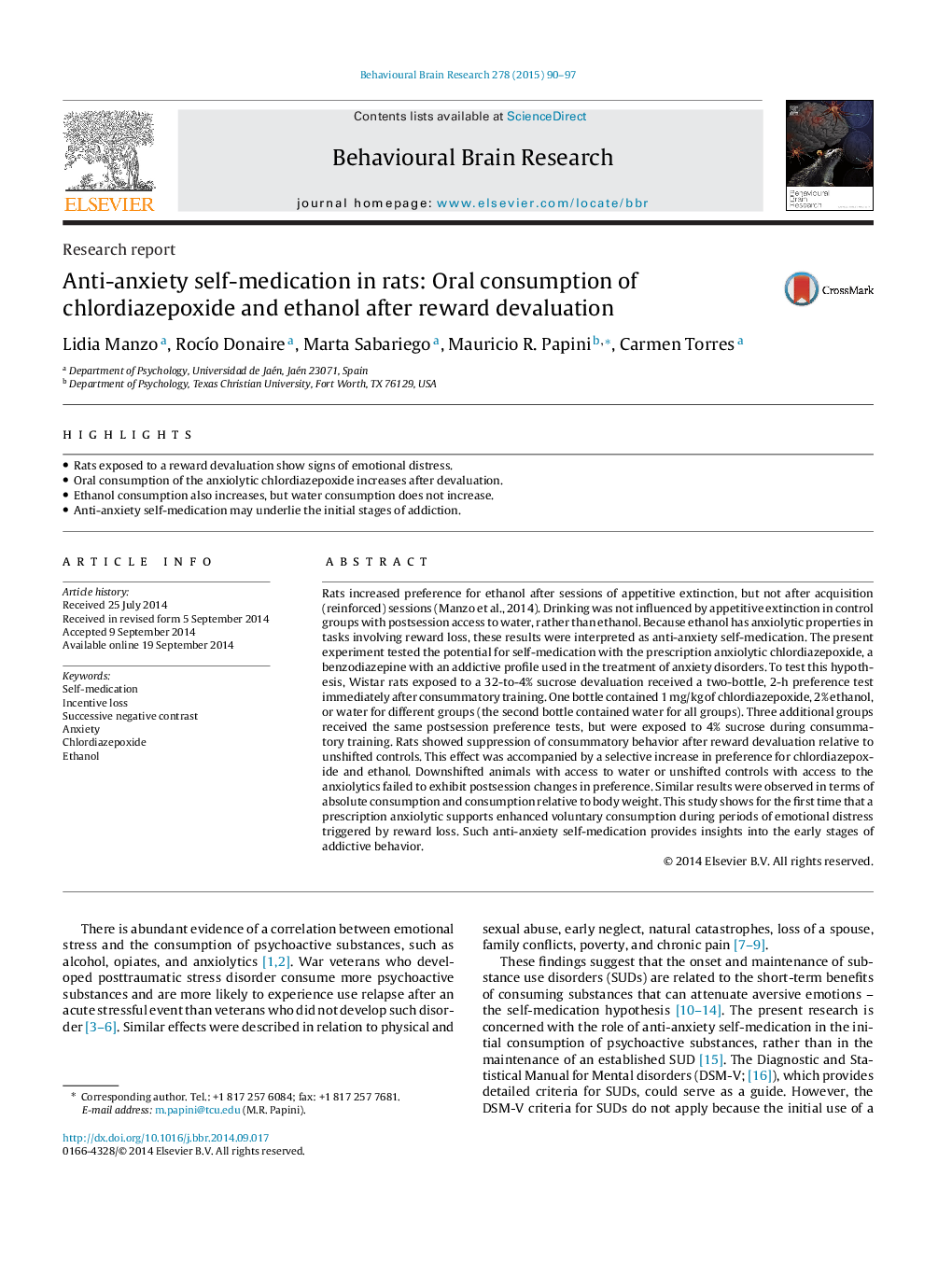| کد مقاله | کد نشریه | سال انتشار | مقاله انگلیسی | نسخه تمام متن |
|---|---|---|---|---|
| 6257559 | 1612954 | 2015 | 8 صفحه PDF | دانلود رایگان |
- Rats exposed to a reward devaluation show signs of emotional distress.
- Oral consumption of the anxiolytic chlordiazepoxide increases after devaluation.
- Ethanol consumption also increases, but water consumption does not increase.
- Anti-anxiety self-medication may underlie the initial stages of addiction.
Rats increased preference for ethanol after sessions of appetitive extinction, but not after acquisition (reinforced) sessions (Manzo et al., 2014). Drinking was not influenced by appetitive extinction in control groups with postsession access to water, rather than ethanol. Because ethanol has anxiolytic properties in tasks involving reward loss, these results were interpreted as anti-anxiety self-medication. The present experiment tested the potential for self-medication with the prescription anxiolytic chlordiazepoxide, a benzodiazepine with an addictive profile used in the treatment of anxiety disorders. To test this hypothesis, Wistar rats exposed to a 32-to-4% sucrose devaluation received a two-bottle, 2-h preference test immediately after consummatory training. One bottle contained 1Â mg/kg of chlordiazepoxide, 2% ethanol, or water for different groups (the second bottle contained water for all groups). Three additional groups received the same postsession preference tests, but were exposed to 4% sucrose during consummatory training. Rats showed suppression of consummatory behavior after reward devaluation relative to unshifted controls. This effect was accompanied by a selective increase in preference for chlordiazepoxide and ethanol. Downshifted animals with access to water or unshifted controls with access to the anxiolytics failed to exhibit postsession changes in preference. Similar results were observed in terms of absolute consumption and consumption relative to body weight. This study shows for the first time that a prescription anxiolytic supports enhanced voluntary consumption during periods of emotional distress triggered by reward loss. Such anti-anxiety self-medication provides insights into the early stages of addictive behavior.
Journal: Behavioural Brain Research - Volume 278, 1 February 2015, Pages 90-97
